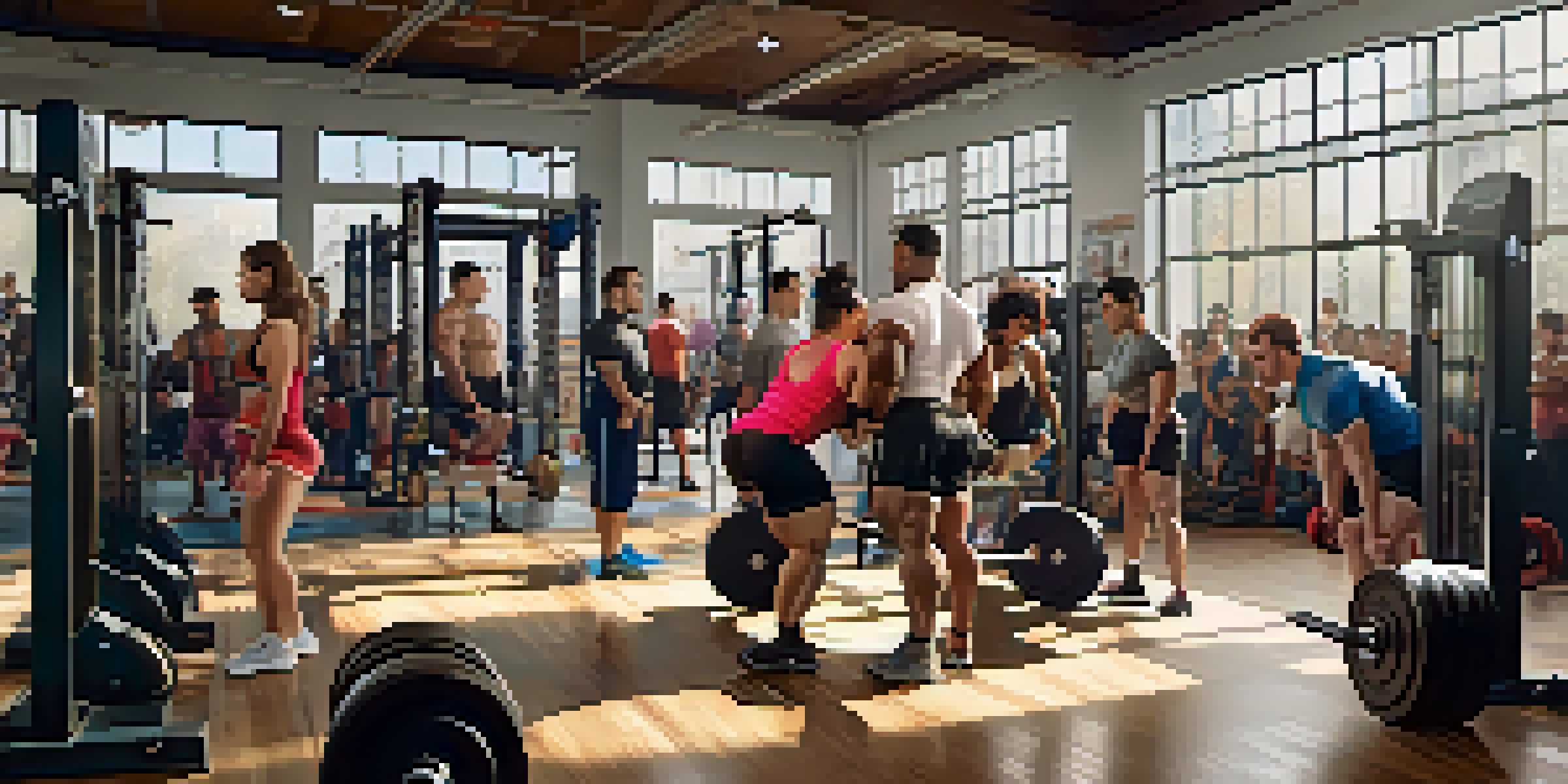Building a Powerlifting Program: Key Elements for Success

Understanding the Basics of Powerlifting for Beginners
Powerlifting is a strength sport focused on three main lifts: the squat, bench press, and deadlift. These lifts test your maximal strength and technique, making them foundational for any powerlifting program. For beginners, understanding these lifts is crucial, as they form the basis of your training.
Strength does not come from physical capacity. It comes from an indomitable will.
Each lift engages different muscle groups and requires specific techniques, which can be overwhelming at first. It's important to learn proper form from the beginning to prevent injuries and build a solid foundation. Consider working with a coach or using instructional videos to help guide your learning process.
Starting with lighter weights and gradually increasing the load is the best approach. This method not only builds strength but also boosts confidence as you master each lift. Remember, every expert was once a beginner, so give yourself time to learn and improve.
Setting Clear Goals to Drive Your Training Program
One of the most important aspects of building a powerlifting program is setting clear, attainable goals. Are you aiming to increase your total weight lifted, improve your technique, or compete in a meet? Having specific goals will guide your training sessions and keep you motivated.

SMART goals—Specific, Measurable, Achievable, Relevant, and Time-bound—are an excellent framework to use. For example, instead of saying 'I want to lift more,' you might say, 'I want to increase my squat by 20 pounds in the next three months.' This clarity allows you to track your progress effectively.
Master the Basics of Powerlifting
Understanding the squat, bench press, and deadlift is crucial for building a solid powerlifting foundation.
Regularly reassessing your goals can also help you stay on track. As you progress, you may find that your initial goals need adjusting, which is perfectly normal. Staying flexible with your objectives ensures your program remains relevant to your evolving skills and aspirations.
Designing a Balanced Training Schedule for Optimal Growth
A well-structured training schedule is essential for success in powerlifting. Typically, you'll want to train each of the three main lifts multiple times a week, combining heavy lifting days with lighter technique-focused sessions. This balance helps prevent burnout and promotes consistent improvement.
Success is the sum of small efforts, repeated day in and day out.
Incorporating accessory exercises is also vital. These exercises target muscle groups that support your main lifts, reducing the risk of injury and enhancing overall strength. For example, incorporating lunges can benefit your squat, while rows can improve your bench press stability.
Don't forget about rest days! Your muscles need time to recover and grow stronger. Scheduling recovery days into your routine helps prevent fatigue and keeps your motivation high, ensuring you're always ready to tackle your next training session.
Incorporating Proper Nutrition to Fuel Your Training
Nutrition plays a critical role in powerlifting success. A well-rounded diet provides the energy you need for intense training and supports muscle recovery. Focus on consuming a balance of proteins, carbohydrates, and healthy fats to fuel your workouts effectively.
For example, protein is essential for muscle repair, so ensure you're including sources like chicken, fish, legumes, and dairy in your meals. Carbohydrates provide the energy needed for your heavy lifting sessions, while healthy fats support hormone production and overall health.
Set SMART Goals for Progress
Establishing Specific, Measurable, Achievable, Relevant, and Time-bound goals will keep your training focused and motivational.
Hydration is another key component—don’t underestimate the power of water! Staying well-hydrated helps maintain performance and aids recovery, so make it a habit to drink water throughout the day, especially before and after workouts.
Prioritizing Technique to Enhance Performance and Safety
Mastering the technique for each lift is paramount in powerlifting. Poor form can lead to injuries and hinder your progress. Therefore, dedicating time to practice proper technique, even with lighter weights, is essential for long-term success.
Consider videoing your lifts or asking a knowledgeable friend or coach for feedback. This will allow you to identify areas for improvement and adjust your form accordingly. Small tweaks to your technique can lead to significant gains in strength over time.
Remember, it's not just about lifting heavy weights; it's about lifting them correctly. Prioritizing good technique will lead to better performance, allowing you to lift more safely and effectively as you progress in your powerlifting journey.
Tracking Progress to Stay Motivated and Make Adjustments
Keeping track of your lifts, nutrition, and overall progress is crucial for staying motivated. Logging your workouts helps you see how far you’ve come and identify patterns in your training. Many lifters find that journaling or using apps makes tracking easier and more engaging.
Regularly reviewing your progress can help you determine whether your program is effective or if adjustments are necessary. If you notice stagnation in your lifts, it might be time to tweak your training schedule or consult with a coach for additional insights.
Join the Powerlifting Community
Connecting with fellow lifters can provide invaluable support, motivation, and insights to enhance your powerlifting journey.
Moreover, celebrating small victories along the way can keep your spirits high. Whether it’s hitting a new personal record or simply completing a challenging workout, acknowledging your progress helps maintain motivation and reinforces the hard work you put into your training.
Embracing the Powerlifting Community for Support
Being part of a supportive community can significantly enhance your powerlifting experience. Surrounding yourself with like-minded individuals who share your passion can provide encouragement, motivation, and valuable tips. Whether you join a local gym or an online group, connecting with others can be a game-changer.
Participating in community events or competitions can also offer fresh perspectives and inspire you to push your limits. Watching others lift and sharing experiences creates a sense of camaraderie that fuels your passion for the sport.

Don’t hesitate to seek advice from more experienced lifters as well. Their insights can help you navigate challenges and improve your training strategies, making your powerlifting journey even more rewarding.